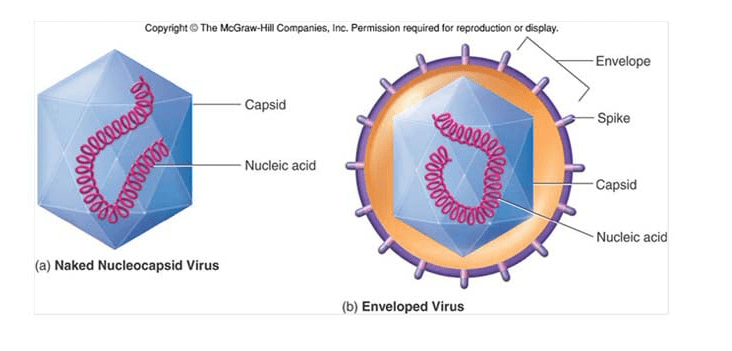What is the main distinction between a prokaryote and eukaryote?
Prokaryotes lack membrane bound organelles, including a nucleus
T/F: Viruses do not possess their own genetic material. In other words, viruses do not have DNA.
False - viruses can have their own DNA, RNA, or even a hybrid of both!
T/F: Bacteria are larger than viruses
True - viruses are significantly smaller than bacteria
The ________ is an external appendage and is responsible for helping a bacterium move throughout its environment.
Flagella
T/F: Viruses are able to replicate on their own.
False - they must infect a host cell in order to reproduce.
T/F: Antibiotics can work against both viral and bacterial infections.
False - antibiotics only work against bacteria
What is one organelle that is shared by both prokaryotes and eukaryotes?
Ribosomes!
______________ are viruses that can infect bacteria.
Bacteriophages (aka phage)
List at least 3 of the 7 characteristics of life.
1. Maintain homeostasis
2. Respond to stimuli in the environment
3. Growth and development
4. Evolution / adaptation
5. Reproduction
6. Use energy / undergoes metabolism
7. Organized at the cellular level / made up of cells
T/F: Just like eukaryotic DNA, prokaryotic DNA is linear
False - prokaryotic DNA is circular
What are the names of the outer layers / structures that viruses can possess?
1. Capsid - protein coat that surrounds a virus's genome
2. Envelope - lipid bilayer that surrounds the capsid and is often derived from the host cell (not all viruses have an envelope)

What characteristics of life do viruses fail to meet? List at least 3.
- Can't reproduce on their own
- Don't utilize energy / make their own energy
- Aren't made of cells
- Don't maintain homeostasis
- Don't grow
How do bacteria reproduce?
Through binary fission where the bacteria replicates itself and divides to yield clones.
T/F: Viruses replicate in a single stage.
False - viruses have two stages of replication, active and latent
A scientist discovers a new specimen while inspecting their crops. They discovered that the specimen lacks membrane bound organelles, is surrounded by a protein coat, infects the plant cells in order to replicate, and is unaffected by antibiotics.
Is this a virus or a prokaryote?
Virus!